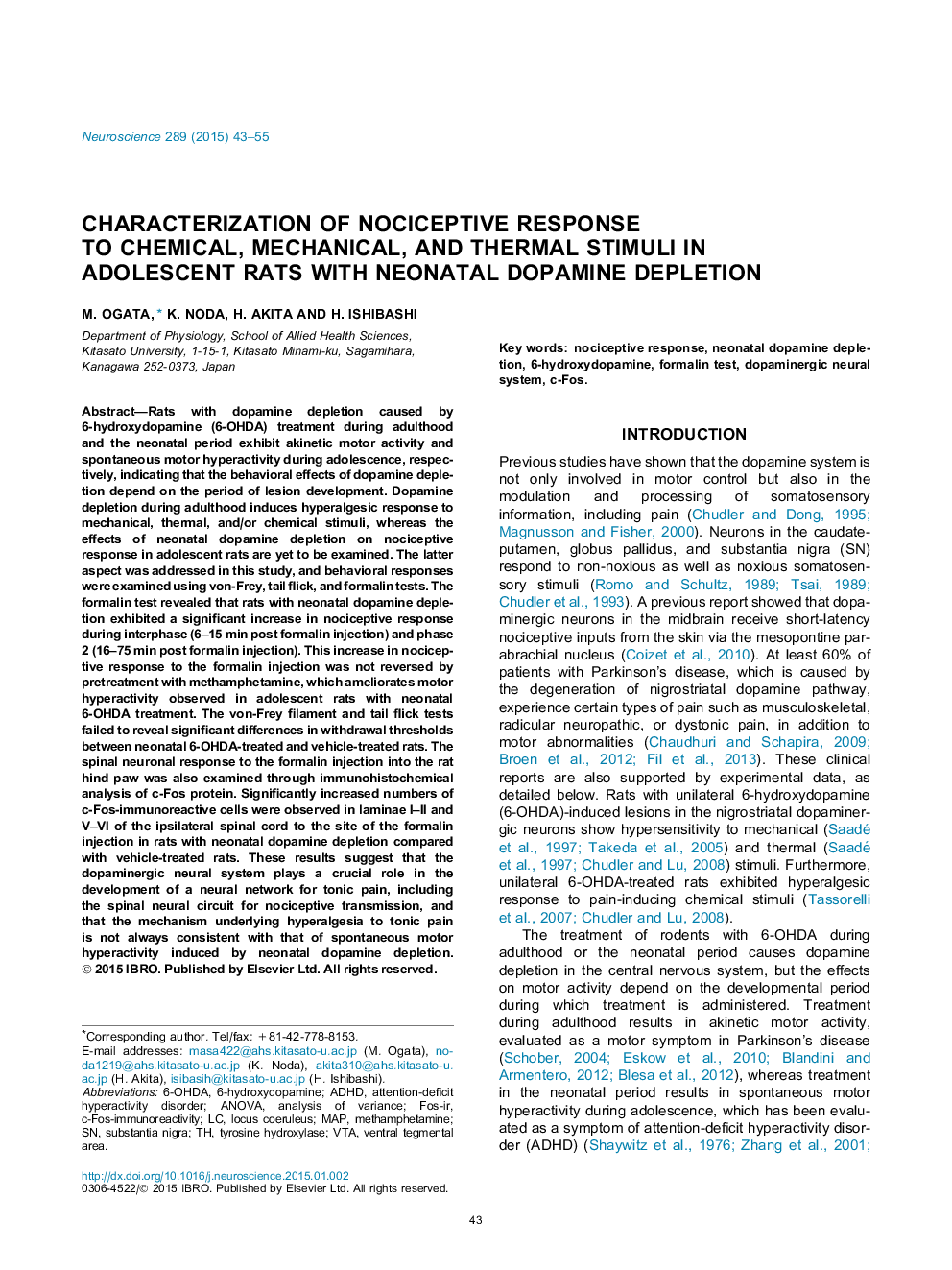| کد مقاله | کد نشریه | سال انتشار | مقاله انگلیسی | نسخه تمام متن |
|---|---|---|---|---|
| 4337546 | 1614787 | 2015 | 13 صفحه PDF | دانلود رایگان |

• Neonatal dopamine (DA) depletion causes motor hyperactivity during adolescence.
• Neonatal DA depletion causes hyperalgesic response to chemical stimulus.
• Hyperalgesia is attributable to hyperactivity in spinal neurons, assessed by c-Fos.
• Hyperalgesia caused by neonatal DA depletion is not reversed by methamphetamine.
• The DA system plays a crucial role in the development of tonic chemical pain.
Rats with dopamine depletion caused by 6-hydroxydopamine (6-OHDA) treatment during adulthood and the neonatal period exhibit akinetic motor activity and spontaneous motor hyperactivity during adolescence, respectively, indicating that the behavioral effects of dopamine depletion depend on the period of lesion development. Dopamine depletion during adulthood induces hyperalgesic response to mechanical, thermal, and/or chemical stimuli, whereas the effects of neonatal dopamine depletion on nociceptive response in adolescent rats are yet to be examined. The latter aspect was addressed in this study, and behavioral responses were examined using von-Frey, tail flick, and formalin tests. The formalin test revealed that rats with neonatal dopamine depletion exhibited a significant increase in nociceptive response during interphase (6–15 min post formalin injection) and phase 2 (16–75 min post formalin injection). This increase in nociceptive response to the formalin injection was not reversed by pretreatment with methamphetamine, which ameliorates motor hyperactivity observed in adolescent rats with neonatal 6-OHDA treatment. The von-Frey filament and tail flick tests failed to reveal significant differences in withdrawal thresholds between neonatal 6-OHDA-treated and vehicle-treated rats. The spinal neuronal response to the formalin injection into the rat hind paw was also examined through immunohistochemical analysis of c-Fos protein. Significantly increased numbers of c-Fos-immunoreactive cells were observed in laminae I–II and V–VI of the ipsilateral spinal cord to the site of the formalin injection in rats with neonatal dopamine depletion compared with vehicle-treated rats. These results suggest that the dopaminergic neural system plays a crucial role in the development of a neural network for tonic pain, including the spinal neural circuit for nociceptive transmission, and that the mechanism underlying hyperalgesia to tonic pain is not always consistent with that of spontaneous motor hyperactivity induced by neonatal dopamine depletion.
Journal: Neuroscience - Volume 289, 19 March 2015, Pages 43–55